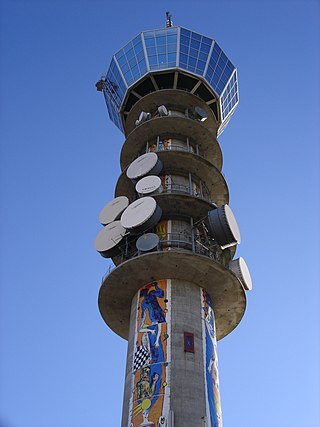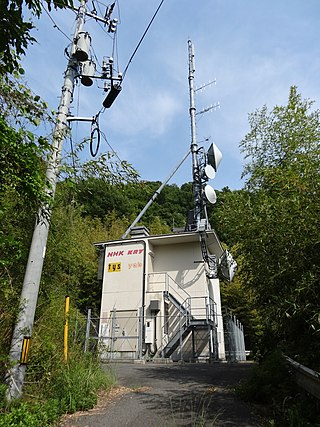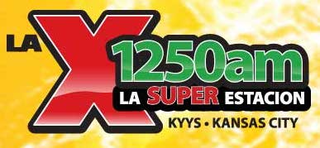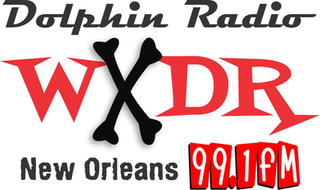FM broadcasting in the United States began in the 1930s at engineer and inventor Edwin Howard Armstrong's experimental station, W2XMN. The use of FM radio has been associated with higher sound quality in music radio.

Radio broadcasting is the broadcasting of audio (sound), sometimes with related metadata, by radio waves to radio receivers belonging to a public audience. In terrestrial radio broadcasting the radio waves are broadcast by a land-based radio station, while in satellite radio the radio waves are broadcast by a satellite in Earth orbit. To receive the content the listener must have a broadcast radio receiver (radio). Stations are often affiliated with a radio network that provides content in a common radio format, either in broadcast syndication or simulcast, or both. Radio stations broadcast with several different types of modulation: AM radio stations transmit in AM, FM radio stations transmit in FM, which are older analog audio standards, while newer digital radio stations transmit in several digital audio standards: DAB, HD radio, DRM.
A clear-channel station is a North American AM radio station that has the highest level of protection from interference from other stations, particularly from nighttime skywave signals. This classification exists to ensure the viability of cross-country or cross-continent radio service enforced through a series of treaties and statutory laws. Known as Class A stations since the 1983 adoption of the Regional Agreement for the Medium Frequency Broadcasting Service in Region 2, they are occasionally still referred to by their former classifications of Class I-A, Class I-B, or Class I-N. The term "clear-channel" is used most often in the context of North America and the Caribbean, where the concept originated.

Low-power broadcasting is broadcasting by a broadcast station at a low transmitter power output to a smaller service area than "full power" stations within the same region. It is often distinguished from "micropower broadcasting" and broadcast translators. LPAM, LPFM and LPTV are in various levels of use across the world, varying widely based on the laws and their enforcement.

The FM broadcast band is a range of radio frequencies used for FM broadcasting by radio stations. The range of frequencies used differs between different parts of the world. In Europe and Africa and in Australia and New Zealand, it spans from 87.5 to 108 megahertz (MHz) - also known as VHF Band II - while in the Americas it ranges from 88 to 108 MHz. The FM broadcast band in Japan uses 76 to 95 MHz, and in Brazil, 76 to 108 MHz. The International Radio and Television Organisation (OIRT) band in Eastern Europe is from 65.9 to 74.0 MHz, although these countries now primarily use the 87.5 to 108 MHz band, as in the case of Russia. Some other countries have already discontinued the OIRT band and have changed to the 87.5 to 108 MHz band.

FM broadcasting is a method of radio broadcasting that uses frequency modulation (FM) of the radio broadcast carrier wave. Invented in 1933 by American engineer Edwin Armstrong, wide-band FM is used worldwide to transmit high-fidelity sound over broadcast radio. FM broadcasting offers higher fidelity—more accurate reproduction of the original program sound—than other broadcasting techniques, such as AM broadcasting. It is also less susceptible to common forms of interference, having less static and popping sounds than are often heard on AM. Therefore, FM is used for most broadcasts of music and general audio. FM radio stations use the very high frequency range of radio frequencies.

WNYE is a non-commercial educational FM radio station licensed to New York City. The station is operated, along with WNYE-TV, by NYC Media, a division of the Mayor's Office of Media and Entertainment. Studios are located at the City University of New York's Graduate Center at 365 Fifth Avenue, and the transmitter is at the former Condé Nast Building.

The extended mediumwave broadcast band, commonly known as the AM expanded band, refers to the broadcast station frequency assignments immediately above the earlier upper limits of 1600 kHz in International Telecommunication Union (ITU) Region 2, and 1602 kHz in ITU Regions 1 and 3.
Apex radio stations was the name commonly given to a short-lived group of United States broadcasting stations, which were used to evaluate transmitting on frequencies that were much higher than the ones used by standard amplitude modulation (AM) and shortwave stations. Their name came from the tall height of their transmitter antennas, which were needed because coverage was primarily limited to local line-of-sight distances. These stations were assigned to what at the time were described as "ultra-high shortwave" frequencies, between roughly 25 and 44 MHz. They employed amplitude modulation (AM) transmissions, although in most cases using a wider bandwidth than standard broadcast band AM stations, in order to provide high fidelity sound with less static and distortion.

WRCR is a commercial AM radio station licensed to Haverstraw, New York, and serving Rockland County. WRCR broadcasts an adult contemporary music format with weekday talk and brokered programming shows. The station is owned by Alexander Broadcasting, Inc. Studios and offices are at 144 Ramapo Road in Garnerville.

KKLF is a commercial radio station licensed to Richardson, Texas. Although the station's signal covers portions of the Dallas-Fort Worth Metroplex, it mainly serves areas of North Texas that are north and east of the Metroplex. This station broadcasts on the AM expanded band. It is owned by Claro Communications, Ltd., with Gerald Benavides as the licensee. It broadcasts a Tejano radio format, using the monikers "Jalapeño Radio". The DJs speak both Spanish and English.
WNBF is a commercial radio station in Binghamton, New York. It airs a talk radio format and is owned by Townsquare Media. The studios and offices are on Court Street in Binghamton.

WION is a commercial full-service AM radio station licensed to serve Ionia, Michigan. The station is owned by Packer Radio WION, LLC and features a mix of locally programmed music, news, and sports. WION transmits in C-QUAM AM stereo.

WLEW is a radio station licensed to Bad Axe, Michigan, United States. with a power output of 1,000 watts, covering much of Huron County, Michigan. The station is owned by Thumb Broadcasting and broadcasts from studios on South Van Dyke Road in Bad Axe. Its country music format simulcast on the FM band by WHST, licensed to Pigeon, Michigan, at 94.1 MHz, with an effective radiated power of 15,000 watts.

A broadcast relay station, also known as a satellite station, relay transmitter, broadcast translator (U.S.), re-broadcaster (Canada), repeater or complementary station (Mexico), is a broadcast transmitter which repeats the signal of a radio or television station to an area not covered by the originating station.

KYYS is a radio station broadcasting a regional Mexican format. The station is licensed to Kansas City, Kansas, United States. It is currently owned by Audacy, Inc. and operations are under an LMA with Reyes Media Group.

KFJB is a commercial radio station in Marshalltown, Iowa, which broadcasts a news/talk and sports format. The station is licensed to Trending Media, Inc. It broadcasts with a 1,000 watt non-directional antenna. Its programming is also carried by a 250 watt FM translator, K230CB, at 93.9 MHz.

WIBK is a classic country-formatted broadcast radio station licensed to Watseka, Illinois, serving Watseka and Eastern Iroquois County, Illinois and Western Benton and Southern Newton counties in Indiana. WIBK is a daytime only station and is owned and operated by Iroquois County Broadcasting Company, which is owned by Richard and Margaret Martin. The WIBK antenna is a three-tower array.

WXDR-LP is a non-commercial campus radio station licensed to Delgado Community College in New Orleans, Louisiana broadcasting on 99.1 MHz FM and Internet streaming. The station brands itself as Dolphin Radio in reference to the college's dolphin mascot, and airs an eclectic mix of musical genres including rock, hip-hop, blues, country, and jazz, along with syndicated programs. It is operated by the students, faculty and staff of Delgado Community College.


















